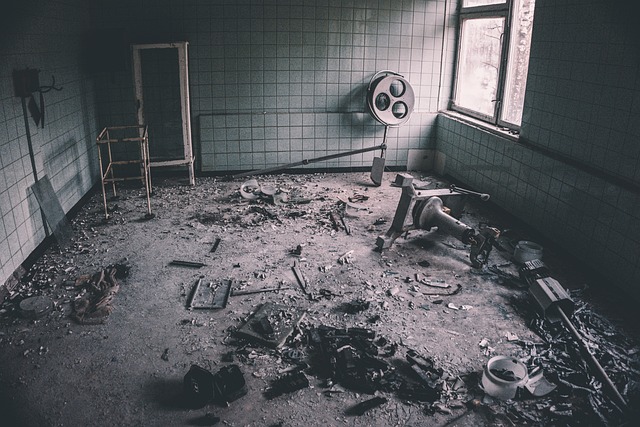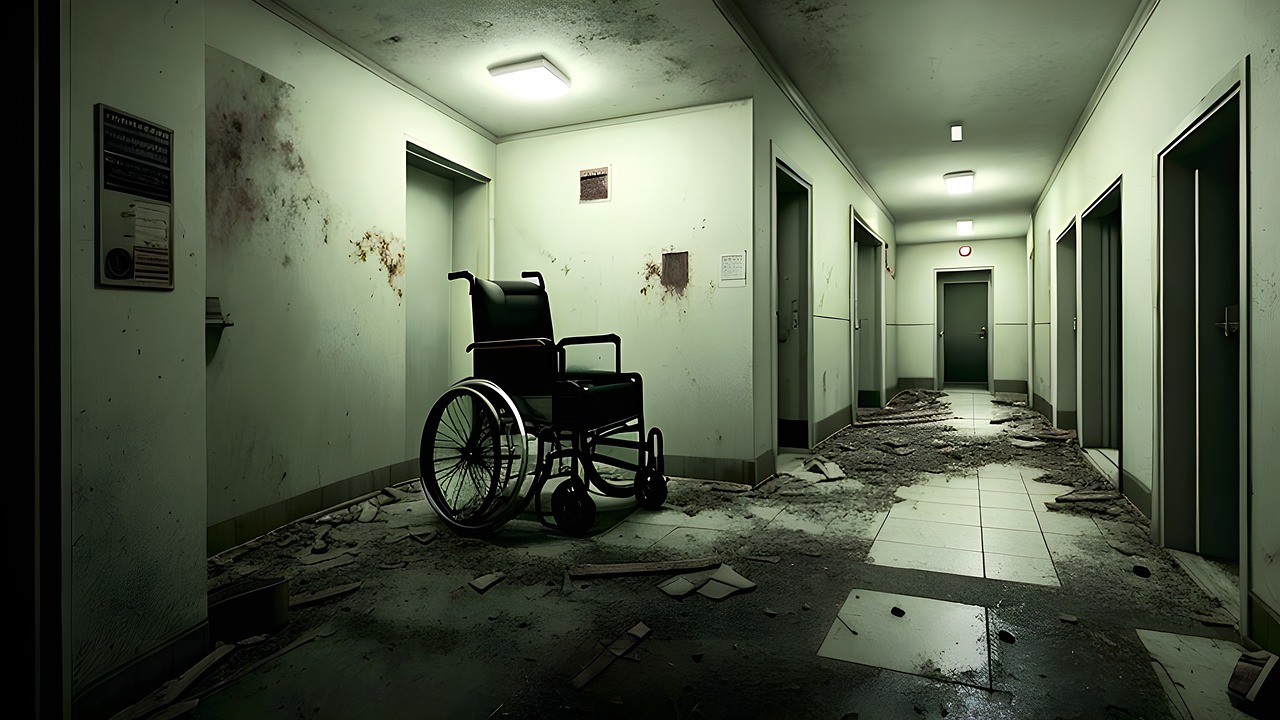
I just watched this incredible documentary on how hospital billing works and I now understand why so many of our hospitals are being forced to shut down. The result, of course, is less available urgent care, higher mortality rates, and, surprisingly enough, rising crime rates. Speaking of the Business of LIFE!!!
So that made me think, am I the only one who didn’t understand all this? I’ll bet not. So rather than make you sit through an hour and a half of a video, I thought I’d do a simple summary here and share it with you all. Here’s the link to the video though, in case you’d like to watch it and know where I got all my information.
Three Ways Hospitals Make Money or, Get Paid
First, you have to understand how hospitals get paid. And understand that if they don’t get paid enough through providing services such as tests and surgeries to pay for the doctors, surgeons, nurses, and other staff, then they just can't stay open. Like all businesses.
You have to also realize that doctors, surgeons, and nurses aren’t minimum-wage workers. They have paid through the nose to go to school for many years to learn their skills. (And personally, I hope my doctor is the "A" student who went to the best schools. So they're compensated a lot more than say, a $20 an hour fast-food worker.
Ok, so here's the scoop. These are the four options for a hospital to generate revenue, aka, get money:
1. Patients who pay cash.
2. Patients who have Medicaid or Medicare. These programs are funded by the government. So you must realize that the government gets this money through payroll deductions from working people, aka employees of all companies. When a patient goes in for a service, a bill is submitted to the appropriate government-run insurance company whether it be Medicaid or Medicare. That insurance company reimburses the hospital for said service.

3. Patients who have insurance through their workplace. This is referred to as “commercial” insurance. This insurance may paid in part with the company profits and in part by the employee. When an employee goes in for a service, a bill is submitted to their insurance company through work. That insurance company reimburses the hospital for said service.
4. But we can’t forget those patients who have no money and just can't pay anything.
The costs are still incurred though, and the money has to come from somewhere. Keep reading to find out where.
Except for option 4 above, it seems like this all could work out fine. Let’s look at each of the four patient options in more detail to find out why it doesn’t.
Patients Who Pay Cash
These are probably the only people who do ok. Well, if they have that kind of cash lying around. I’ve read in many places that if you pay cash, you will be billed at up to 80% lower than an insurance company would be. Most hospitals are so darn happy to be paid in full right up front, that they are probably going to charge you closer to the actual cost of the surgery or service.
Patients Who Have Medicaid or Medicare: Here's the REAL Kicker!
Did you know that Medicaid/Medicare will negotiate with each hospital, every two years or so, for how much they will pay for a service?
The problem is that those two government-run entities don’t care what it actually costs to provide that service.
For example, a mammogram. We’ll keep it simple and boil this process down to just the salary of the technician and the cost of the facility. She might get paid $36 an hour. And I’ll say the process takes about an hour and a half from start to finish. That’s $54. The machinery and the room cost might be $20 an hour, so $30 for that, with a grand total of $84 for the mammogram.
Medicaid will tell the hospital they will only reimburse the hospital $30 for each mammogram that it provides! This means the hospital goes in the negative $54 for every patient who gets this done.

Or let’s talk about a heart valve replacement. Maybe the surgeon is paid $150 an hour. If we’re talking about a four-hour surgery, this will cost $600. And his assistant is paid $50 an hour for four hours. That’s another $200. (I have no idea how many assistants there are for these things.) Then let’s say it's about $300 for various supplies (gauze, sponges, anesthetics, gloves, masks, etc. ). Oh, and $100 an hour for the room and its equipment. We’re up to $1,500.
Medicaid says they will only reimburse the hospital $900 for each surgery of this type! This means the hospital goes in the negative $600 for every patient who gets this procedure.
Can you see the pattern of loss here?
Something else to be reminded of here is that Medicaid and Medicare are funded by payroll deductions of people who work and those who are on Social Security. Yes, look for that line item on your pay stub. That is how government-funded insurance is funded; by people who have jobs or are retired. If jobs are gone, so goes this funding.
You should also be aware that these are the same people who also pay for part of their own medical insurance through more payroll deductions. Keep reading.
Patients Who Have Employer Insurance
I learned a new phrase here: this is called "commercial insurance."
Every single insurance company will go through the same negotiating process that Medicaid and Medicare do, with every hospital in the country with which they work. Imagine how many insurance companies there are in the US doing this every two years: hundreds I’m sure.
And they do this for every single service and every single supply such as aspirin, gauze, or band-aids. This is why every single service and product can have over 150 - 200 different prices! Can you believe that???
But, and this is a big BUT, the hospitals know that they have to make up the money they are losing with Medicaid/Medicare. So what do they do? They overcharge these other commercial insurance companies to make up the difference. And they may need to overcharge by a lot. Because of this process, each different insurance company may get billed a different price for the same service. Again, this is why there can be up to 150 different prices for the same service at the same hospital with the same staff.
Those charges are then reflected in the rates employers have to pay for employee insurance. When it gets to be too much for the employer to cover the entire cost, they pass part of that cost on to the employees. Some companies will still foot the entire bill, but many don’t anymore because the insurance companies are being billed so much that they have to raise their rates.
Isn’t that nice?
Lastly, Patients Who Can't Pay at All
So who do you suppose that includes?
- Maybe all those who lost their jobs during the shutdown,
- Or all those who never had employer-sponsored insurance,
- Or people who got hurt or sick and can't work,
- We also have veterans who are disabled and have been chasing their benefits for years,
- And maybe even the millions of illegal immigrants who have come to America in recent years.
Hospitals collect zero dollars from these patients no matter how many services are provided. That means that simply put, the doctors and nurses, who helped these patients and the electricity to keep the lights on in the patient's hospital room, all have to be paid by someone else. Keep reading to learn more about how the hospitals attempt to cover the costs.
Let's Summarize and Tie All This Together Now
We have four types of hospital patients who may or may not pay:
Cash: Probably pay 100% of actual cost for services: this is probably a break-even scenario.
Medicaid, Medicare: They pay approximately 20% less than the actual cost for each service. That's a 20% loss per patient for every service provided.
Employer Paid/ Commercial Insurance: The number of Medicaid/ Medicare patients will determine how much over cost the commercial insurance companies will be paying. In our scenario here, they have to pay 120% over cost. That’s not to mention, the next group who can't or just don't pay. So these companies may be paying up to or more than 200% of actual cost.
Poor patients who can't pay: This is 100% loss for each patient. Commercial insurance is the only insurance that can make up this loss. Again, it gets dropped on the working people.
So who takes it like a rat?
As you can see, there are two giant options for loss of revenue ( aka, money) when it comes to medical payments:
- Options 2 and 4 shown above.
And I think you can now see who carries the biggest burden of the cost of health care:
- Option 3, the commercial insurance companies funded by working people who not only have payroll deductions for Medicaid/medicare, they may also have to pay for their own private medical insurance.
One More Part of the Money Pit Scenario...
Now let's take a look at the domino effect when a big company shuts down in your town, like the sawmill, a casino, or a hospital, or when a majority of the people in your town are retired.
- You'll now have fewer working people who pay for commercial medical insurance.
- Which means you'll have fewer payroll deductions to fund Medicaid and Medicare.
- And you'll have fewer people who can pay cash.
- So then you'll have more people depending on Medicaid or Medicare: the two companies undercutting/underbidding the hospitals.
- And more people probably having to get services for free.

So you have to ask yourself: How are the doctors and nurses going to be paid when any one of these scenarios happens? Where is the money coming from not only for their pay but to keep the lights on and to keep all the machinery running in the hospital?
Simply put, when there’s not enough money coming in well, the hospitals and staff don't get paid at all. And the electric and phone bills don't get paid either. At this point, the hospital has to close its doors. There is not a single business on earth that can keep running when they are losing money every month.
What does that look like in a small town?

Residents now have to find their way to another hospital an hour or two away when they get in a car accident, have a stroke, have a heart attack, or even experience something like going into labor.
My small town of Pahrump has no maternity faculties so all pregnant women must drive a minimum of an hour and a half to Las Vegas for most of their prenatal care and then labor and delivery. Most accident victims, stroke victims, and heart attack victims are also taken to Vegas for treatment. Luckily we have EMTs and a helicopter so that saves some time. But it doesn’t always save lives.
Thoughts? Suggestions? Solutions?
Keep in mind that this is my interpretation of the documentary. If you have time, watch it. Very worthwhile and eye-opening. Remember, the link is at the top of this post.
I’d love to hear your thoughts on this and your suggestions as to what you think can be done to prevent hospital closures from happening.
Sincerely,
